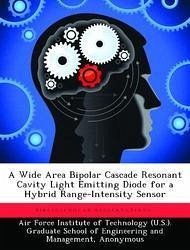This dissertation focused on the development of an illuminator for the HRIS. This illuminator enables faster image rendering and reduces the potential of errors in return signal data, that could be generated from extremely rough terrain. Four major achievements resulted from this work, which advance the field of 3-D image acquisition. The first is that the TJ is an effective current spreading layer for LEDs with mesa width up to 140 ?m and current densities of ~ 1 x 106 A/cm2. The TJ allows fabrication of an efficient illuminator, with required geometry for the HRIS to operate as a real-time 3-D imaging system. Secondly, a design for a Bipolar Cascade-Resonant Cavity Light Emitting Diode (BC-RCLED) has been accomplished, that will illuminate the FOV of the hybrid-ranged intensity system with a single sweep of the beam. This device is capable of producing ~ 330 mW of output power. Additionally, from this work, key parameters for HRIS design were identified. Using a collection optic with a 15 cm diameter, an HRIS mounting height of 1.5 m, and a detector integration time of 330 msec, a SNR of 20 dB was achieved. Lastly, we demonstrated that the BC-RCLED designed for the HRIS can deliver sufficient energy to produce the required SNR. Also, through parametric analysis, we determined that a system trade-off, between the collection optic diameter, and the integration time, results in an increase in the SNR from 20 to nearly 50, or extending the operational range from 50 to nearly 130 m.
Hinweis: Dieser Artikel kann nur an eine deutsche Lieferadresse ausgeliefert werden.
Hinweis: Dieser Artikel kann nur an eine deutsche Lieferadresse ausgeliefert werden.








